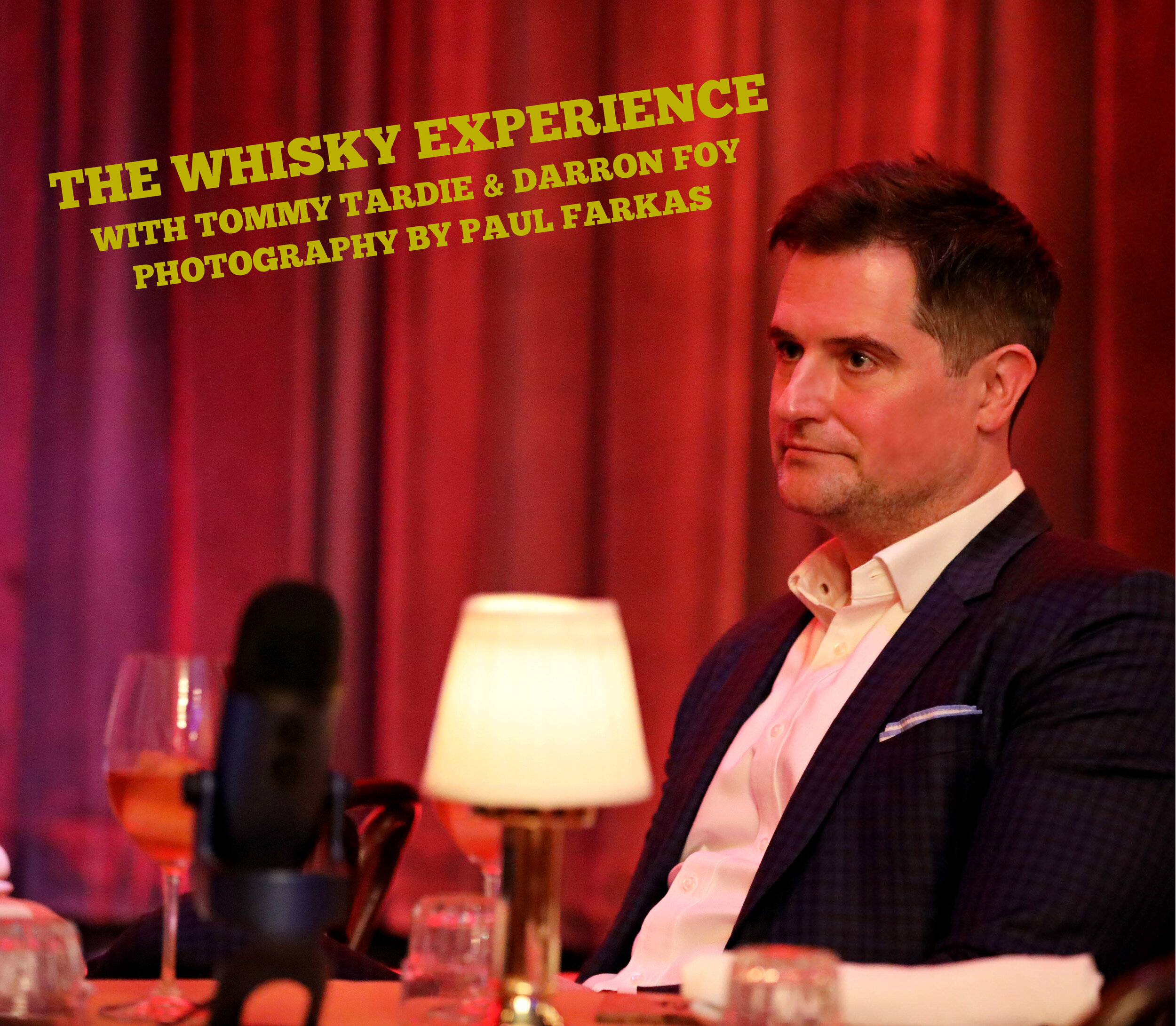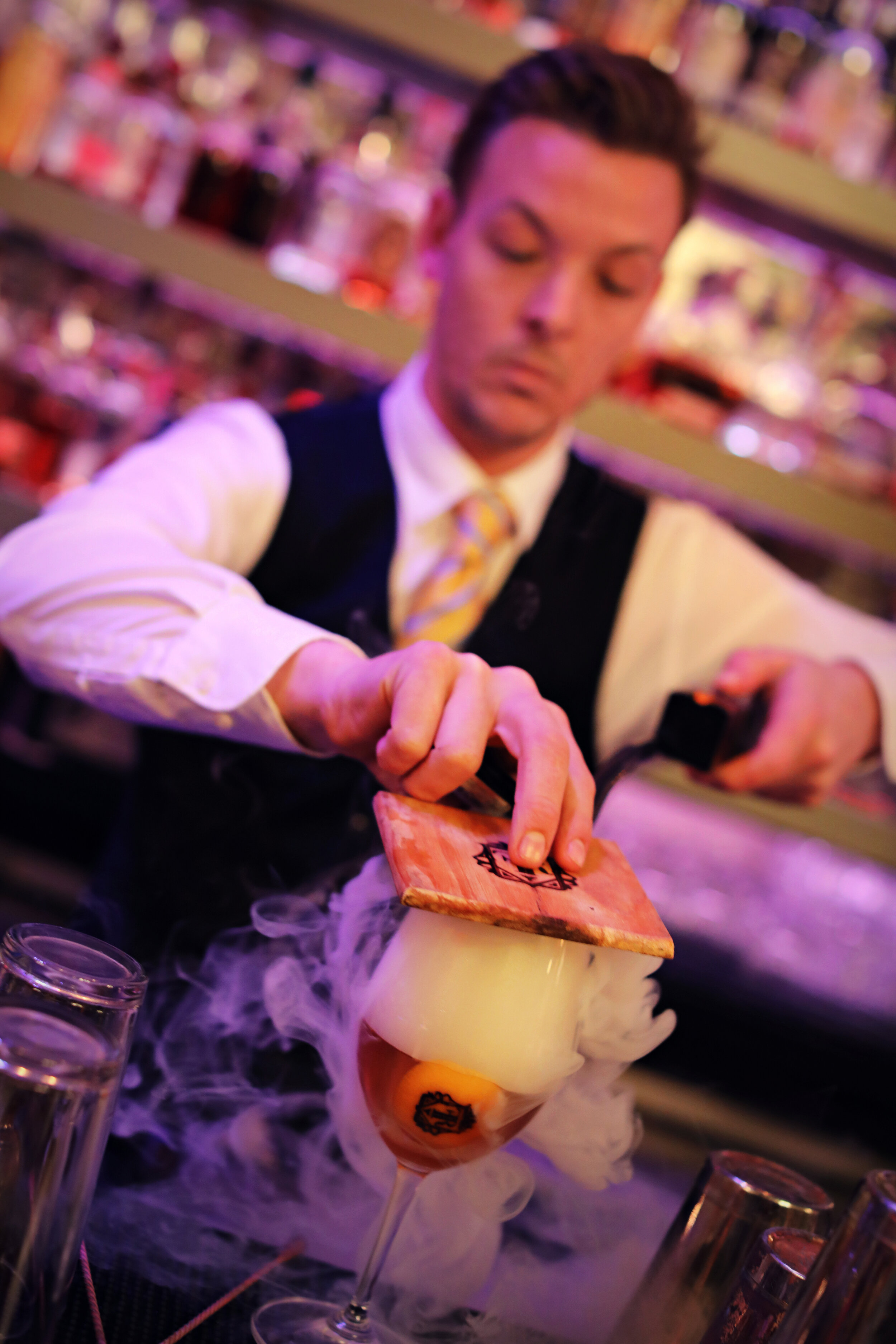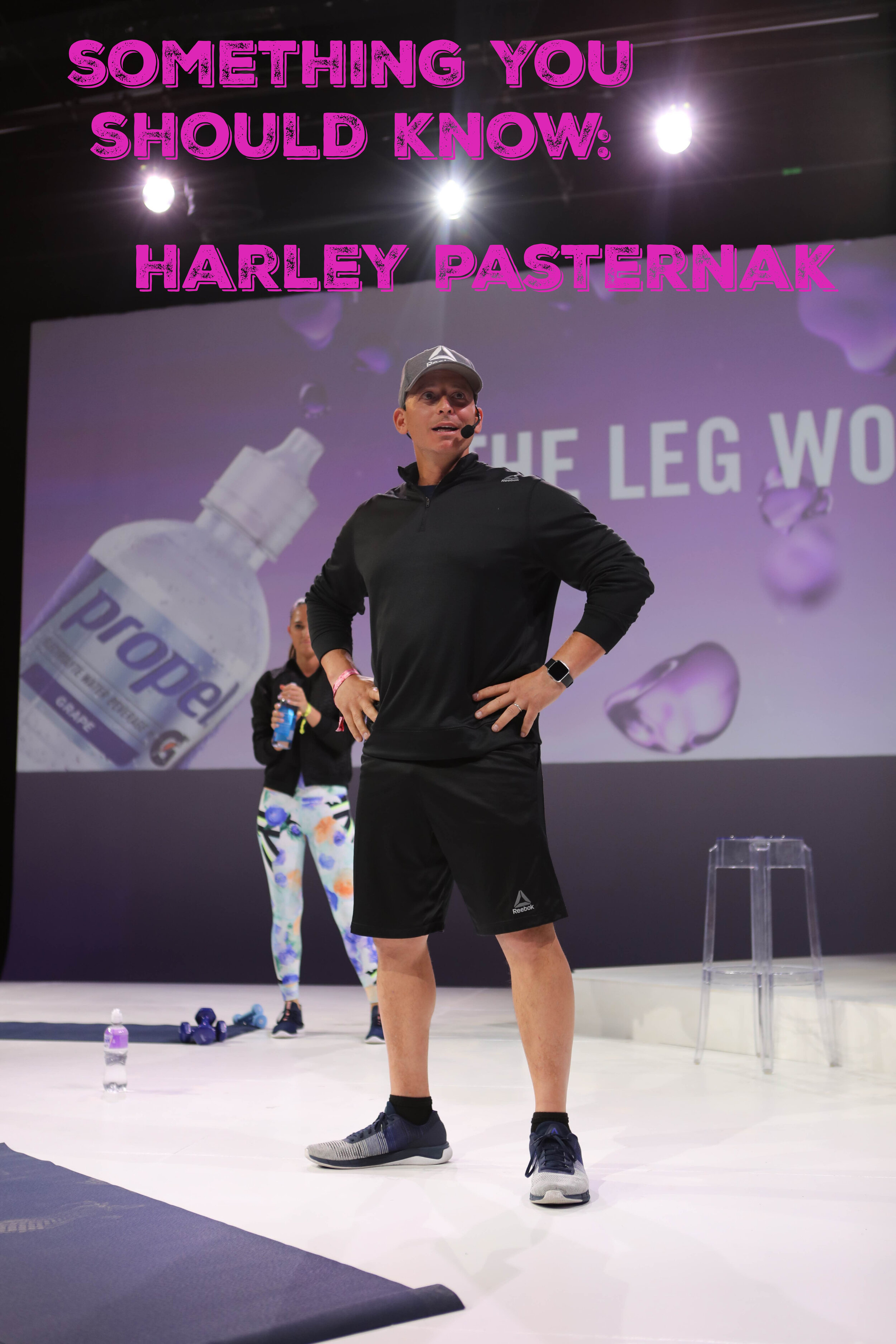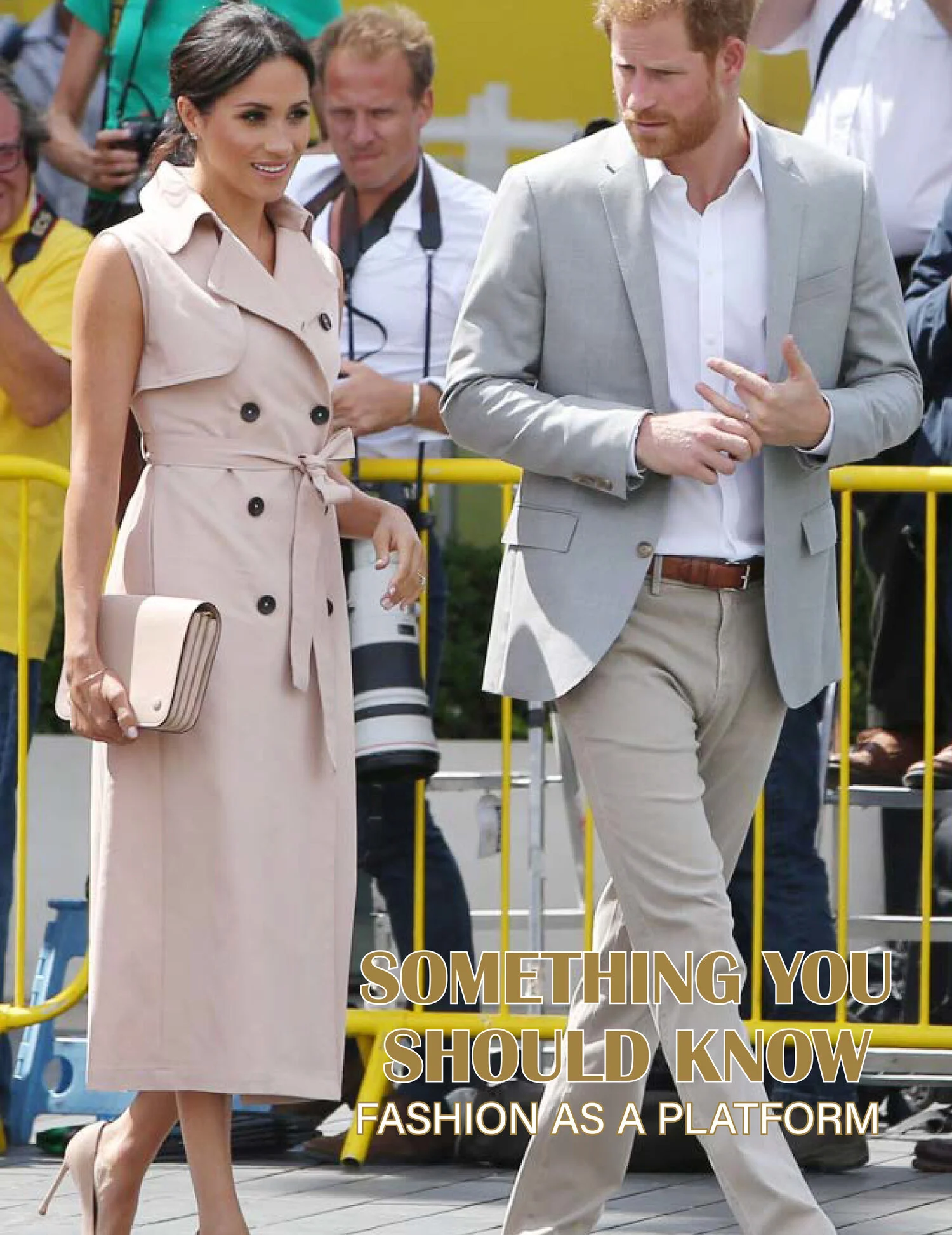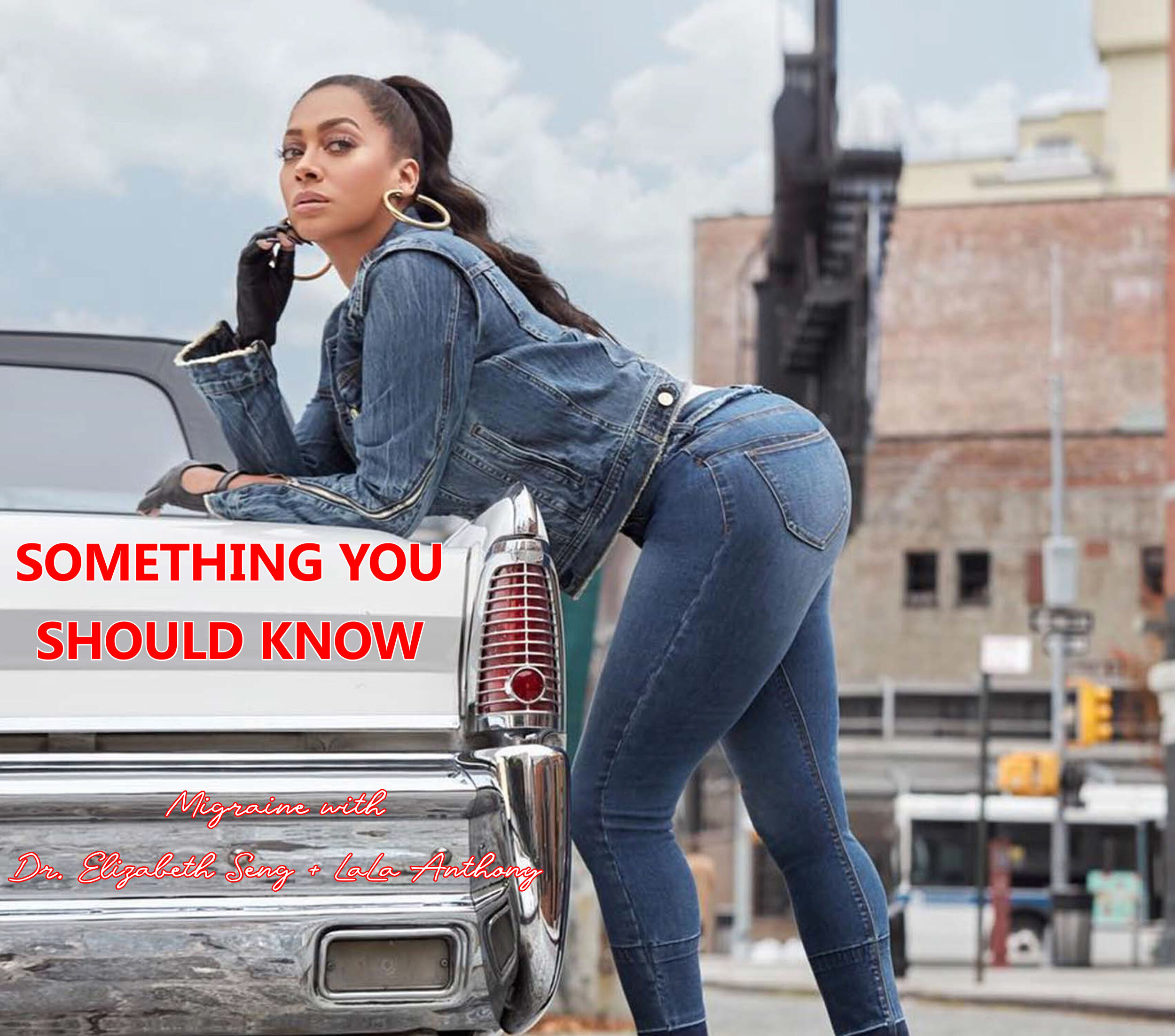As the holiday season means that we have a lot more on our plates than usual, the need to find a place to take a moment is key! We made our way to NYC's whiskey destination, The Flatiron Room which is known for its staggering amount of whiskeys that are available, cocktails, entertainment and an experience that's not to be missed. We sat down with Tommy Tardie the founder of the Goodnight Group LLC which is comprised of The Flatiron Room and Fine & Rare to talk about what led to creating these spaces, the importance of cultivating these environments as well as how he stays inspired in the hospitality industry. We also took some time to chat with his head bartender, Darron Foy who lets us know about cocktails that we should try there, his interest in working in this space as well as what we need to have on hand when we try our hand on making cocktails at home.
ATHLEISURE MAG: So before The Flatiron Room, what was your background?
TOMMY TARDIE: My real background and what I went to school for was advertising. I used to be the Creative Director in advertising before I got into hospitality and once I ventured into hospitality, I started with a small lounge, had moderate success with the first lounge. I thought, wouldn’t it be cool if I could charge even more for the same drink and that’s when I went into the nightclub scene. I opened up a couple of different nightclubs and they were very profitable. Margins in nightclubs are pretty high, but it wasn’t a lifestyle that I really enjoyed and I decided that I wanted to stay in hospitality. But if I stayed in hospitality, I wanted to stay in a place that I enjoyed going to. A place that kind of put me as the demographic and that was kind of the genesis of The Flatiron Room. I looked at it and rather than doing field research, I said that I would build a place that I would want to hang out and that I would want to take my friends to.
AM: For those that have not come here, let our readers know what they can expect.
TT: I think the key word is an experience. We want guests to have an experience when they come here. We want there to be theater in the overall experience. When I say theater, people that come here equate that to the music that we have here on stage. The theater is really the whole dynamic of the room! When you walk through the room, of course you’ll see people that are on the stage – that’s part of the theater. But the way that our servers are trained and even the way that they pour their drinks at the table, the way that they climb up and down the ladders, the way that they crush ice from a 1920’s ice crusher – that’s all part of the theater and the choreography of the room.
AM: How many whiskeys do you have here?
TT: Well, that’s a great question and I can’t give you an accurate answer, but I would say around 1,200 – 1,500 unique expressions and that was a journey in and of itself. When I first opened, I thought 250 would be a respectable number. I wanted to have that amount and thought having that would be great. At the time, I thought that I knew a lot about whiskey and over time, I realized that I knew nothing about whiskey! As I started purchasing them, I got into conversations with those that were engaged and knew about the whiskeys and that’s when I went down the route of needing to get more indepth into the knowledge of the whskeys. Prior to working in hospitality, I was a creative director and I tend to be visually oriented – very right brained. So I traveled around a lot to learn about whiskeys and I went a fair amount to Scotland and just met with the distillers and saw how it was made. It really helped with my knowledge a lot. Coming back from these trips, I would come with new whiskeys and 250, turned into 300, which turned into 400, and then 500. What I quickly realized was that once you became known for whiskey, you have a responsibility to guests to have all the new whiskey when it comes in. It wasn’t something that I had factored into my algorithm. The more people came in – I had an obligation. They would say, “oh you haven’t gotten the new release from Glenmorangie?” I’d say, “oh we have to get it.” Then we breached 1,000 and there was no turning back!
AM: Just looking at this room, it’s amazing to see all of these cabinets where people can store their own whiskey – tell us about this.
TT: The idea behind this – I call it Bottle Keep. Before moving to NYC I lived in Hawaii and when I was there, I was into surfing a lot and a lot of my buddies were Japanese. We would travel to Japan quite a few times and I was younger then and we would go to this nightclub district known as Roppongi. I remember that it was such a cool concept that they had these bottles that were stored. At the time I just thought it was really cool and it must have stuck in my longterm memory. So when I opened this, I thought that having been in the nightclub business that I understood Bottle Service. Bottle Service wasn’t something that I wanted to do, but I thought if there was a way to take that concept and maturing it which made me think about my trips to Japan and I thought it would be cool. Also, bottles look cool when they’re displayed and when you hit them with the light as you’re a visual person so you uplight them and they look stunning. Also, in NYC, space is a commodity and I wanted to incorporate the bottles into the architecture. I allocated all this space for the bottles and it was a hard road initially because we had all this space. The first night we sold 3 with friends and family that purchased them. I was like, “wow we have like 800 more to go before this place looks legit.” Over the years, it grew and now, we have more demand than supply. In the manager’s office, we have an actual room where we store extra bottles.
AM: What are your favorite go to whiskeys?
TT: Oh gosh. They change, but I think that anybody that knows whiskey – I mean I could throw it back to you and you’d probably have a hard time answering because it’s very situational. Whiskey is based on the season, time of day, the mood – fortunately I have over 1,000 to choose from for my many moods. I will say that some of my hands down favorites that I tend to revert back to are: Glendronach 18 as my go-to favorite. I love a good Bowmore – if I go with peat then I like to go with something that has a nice balance of Sherry to get that smoky sweet elements and because I’m American, I have to throw in a bourbon. I tend to like bourbon’s cask strength E.H. Taylor is a full proof whiskey. Bourbon – I love Michter’s, Buffalo Trace – some of the Buffalo Trace antique collections are always good. It’s not as affordable as it used to be.
AM: What cocktail do you suggest that our readers should make sure to ask for when they come by?
TT: The one that we’re drinking now is called our Smoking Old Fashioned. We talked earlier about being theatrical and this is one of those kinds of cocktails, but it’s not all fluff. The smoke that’s put in the cocktail – the phenols that are attached to the liquor it gives a residual smoke in the flavor. I like this cocktail because being a visual person, I say that the first drink is with the eyes, the second drink is with the nose and the third drink is with the mouth. So this delivers on all three and when it comes across the room you see the smoke in it. You lift off the cap and it has that wow moment so that when people smell it they say, "wow what is that?" But it delivers on the final product because it happens to taste as good as it looks and as good as it smells.
AM: In terms of pairing whiskeys with various items offered on your menu, what do you suggest?
TT: It’s somewhat of a subjective question. I have been to a lot of tastings where they have paired items with things that people would not normally expect to pair with whiskey. For me, I like to pair cheese with whiskey. It has this creaminess and richness and it coats your mouth first. Having the alcohol interact with the viscosity in your mouth – it does something really special and brings out flavors that you normally wouldn’t expect. I will say that if I am drinking something really old and really fine, and I just want to focus on that, then I don’t want to complicate my palette at all. I don’t want to introduce other flavors in there. If it is something that is moderately priced sure I can experiment with it. But if someone is pouring me a 25-year or a 35-year whiskey – then I just want to enjoy every aspect of that from every subtle nuance. For me, a good whiskey is something that develops on your palette. A lot of people think that you have a sip of whiskey and that’s it. But if you really go in deep on the flavor of whiskey – it evolves – what initially hits your mouth when the alcohol starts to burn off and new flavors will appear, grow and resonate on your palette. I think that’s why it’s such a great sipping drink. You take a sip and sit back and let it have its way across your palette and you just enjoy it.
AM: We know that The Flatiron Room is a great place to come to and with the holiday season upon us, what events can guests come to?
TT: The 4th quarter for us – the holiday season, we have a lot of guests that come in from out of town. Unfortunately, they see that we are closed for private events – it’s the season and many times we’re closed for that. I always recommend that people call in advance to make sure that we are open. With that said, we do have some events that are open during this time where guests can come in and bring their friends and family from out of town so that they can get a taste of old New York. During Thanksgiving we had a great feast which was a prix-fixe dinner. On Christmas Day we have another event. For NYE, we’re throwing a great party and we have a tremendous band – Carte Blanche that will be performing live here. We have a number of great things taking place if you have guests that are in from out of town.
AM: Do you still do inspirational travel when you're looking for new whiskeys?
TT: Yes! It’s one of the best things about the job and getting inspired. I get to go to Scotland quite a bit when I’m over there meeting with people, the distillers, learning about new expressions when they come out. It’s funny because my knowledge base has developed so much and every year, I think that I know a decent amount about whiskey, but then the following year I look back and I think, “gosh I didn’t really know much.” Today if you asked me if I knew a bit about whiskey, I would confidently say yes. If we had the same conversation next year, I’d probably look back and say, “oh wow I knew nothing.” But it’s fun and it’s a fun journey and I love learning as well as traveling and it works out.
AM: What are 3 things that you put in your carry-on when you’re traveling to make the flight easier, or to feel that you’re at home or when you’re relaxing after having copious whiskey tastes?
TT: Great! Headphones for sure, Melatonin is my go to because if I’m traveling to Scotland it tends to be an overnight flight and that gets me there. Also a flask - they're always fun and of course when I come back, I tend to come back with one as well!
AM: You can’t have them get lonely! Is there anything else that you would like to share with our readers to let them know about The Flatiron Room?
TT: If you haven’t experienced us yet, please come down and experience us! I think it’s a unique experience especially if you’re a New Yorker and people love those New York Moments. If you haven’t checked out my other property, it’s called Fine & Rare (9 East 37th St NY, NY 10016) and I recommend going there to try that out as well. It’s a similar vibe that is a little more food focused, we also have a large dynamic selection of whiskey!
We find out more about this incredible space from Head Bartender, Darron Foy.
ATHLEISURE MAG: When did you know you wanted to be a bartender?
DARRON FOY: I think it’s when I came to NY. I bartended for 8 or 9 years before that in Scotland where I’m from. It was admittingly more for financial gain as I was studying at University and I needed extra cash. I very quickly fell in love with the kind of interaction that you can have with the public. It wasn’t so much about the drinks or the crafting of the cocktails. It was actually the interaction and the evolving communication that I had with the public that grasped my love. When I moved to NY, I just noticed that the bartenders in NY – it was cool and you felt like almost important when you are working behind the bar. It was your fortress. So, I really started to delve into cocktails. As a Scotsman, we’re much more happy with a single dram, a gin and tonic or a vodka. But I started to notice very quickly with my background in music and in art that I really enjoyed crafting cocktails. So when I finally applied to come to The Flatiron Room, I had learned the NY basics of cocktails from the Manhattan, Sazeracs etc. I came here and I was immersed into the cocktails that we did at this bar. When I came to NY, I knew this was what I wanted to do to be in engaged with the public, to learn more and to educate. I wanted to perform and it’s a constant back and forth with the public.
AM: What is a shift like here?
DF: It can be anything. Tommy mentioned the word subjective in your interview a few times which I think is the perfect word to use when talking about the hospitality sector! We can have a beautifully nice relaxed night here with fantastic cocktails and great music. We can be slammed to the rafters. You can spend an entire evening not talking to your fellow bartender because you’re flying cocktails out. It’s constantly changing and by being in this – it keeps you on your toes. No day is the same; therefore, you have to be prepared for whatever comes. You may have a great customer, you may have a slightly argumentative customer. You may spend 20 minutes making a simple cocktail and they praise it to the heavens. So everyday in my opinion is a new day! I think again going back to the fact of why I like being a bartender. It’s not monotonous.
AM: What are your 3 favorite cocktails that we should have when we come to the The Flatiron Room?
DF: Normally when customers ask this, I do say whiskey as we have a fantastic collection and as a whiskey lover myself. We showcased the Smoking Old Fashioned – visually again, it’s just a fantastic cocktail. As Tommy said, you drink with your eyes and your senses and we’re trying to create a sensory enjoyment. I believe that Rye Old Fashioned with the Smoking Old Fashioned is just being elevated. Your adding the savory wood tones with the Rye Old Fashioned itself and it becomes a lot more than a simple cocktail.
One that is on the menu right now that I crafted is called the Cardamom Blossom. I’m very proud of this cocktail. It’s a link to my wife’s family and my Scottish background. It’s using cachaça, my wife’s family spent some years in Brazil and once I moved to NY we all met up finally. One of the first gifts that I got was a bottle of cachaça – I was very interested in the flavor. It has a sugar cane note and my wife’s brothers and cousins would make me Caipirinhas – a classic cocktail. I wanted to change it and I noticed that we never had a cachaça cocktail in the bar. So it's a mix of blended scotch whiskey, cachaça, and using orgeat syrup which is an almond syrup which has a nice baking taste to it. We added lemon juice, bitters, some honey and adding cardamom. It’s an egg white cocktail that I love to make – I adore egg cocktails because I like the viscosity of it and the way it looks. But it’s also very light and very plain. I’m proud of it because I think that it is a very elegant drink.
Finally, I personally feel that a very well made Manhattan is such an easy cocktail to create and very easy to muck it up. One of the things that I like to do when I go to a new bar is to order a Manhattan or an Old Fashioned because I want to see how they make it. I’ve had Old Fashioned filled with chunks of orange, cherries and I just like to go back to the classics because to me, that’s not what it is. A well made Manhattan which I think in my opinion, we do well we do well here is just an elegant and standard classic cocktail.
AM: You just shared the Cardamom Blossom that you crafted. How do you go about obtaining inspirations for creating other drinks?
DF: I think that that goes back to communication. Talking with the public, your fellow bartenders and servers. I have a music and artistic background so I feel that I have been creating from the second I could see over the stove, my mother in Scotland had me cooking. I love to cook and I love creating things. I think that I have that artistic ability where I take great pleasure in creating things. I think that people tend to be cautious when trying new things and I hope that people realize that that’s not the way to be. You have to dive into trying new things. So a lot of my experience comes from bar diving with my wife and trying new things from receiving a new whiskey at the bar and smelling it and trying new flavors and what would work with it and it’s a constantly evolving process.
Communication is great and when you talk to fellow industry professionals and why they chose certain bitters or garnishes, it helps to evolve your own personal ability. Communication is key in terms of creating new cocktails.
AM: So for the people who want to make whiskey cocktails at home, what are the things that they should have on hand as many may be a bit hesitant to do this at home?
DF: First of all having the correct tools – strainers, cocktail shakers and stirrers. Even things like good ice. You go back to the very basics when you’re crafting a cocktail. If you’re using broken up ice and it’s breaking into the cocktail, it’s diluting it too much. If you’re wanting to present it a certain way, are you using crushed ice, blazened ice, ice rocks? In terms of experimenting, you know your own palette – again maybe step away from that. If you know that you like a certain flavor and you know you can craft a good cocktail, why not remove that entirely and try something new. You might not like it, but it may open your eyes and head to more ideas and more experimentation. I think good mixers, good bitters can help the process and having a variety of good scotches, whiskeys, ryes, and bourbons etc all promote different flavors and therefore reacts with the palette differently. I love the classics such as the Angostura Bitters and the Peychaud’s Bitters. I mean, 20 years ago especially when it came to Angostura, any recipe that required a bitter would come from this brand! Nowadays, we have a fantastic array of companies, different bitters – the Fee Brothers have a fantastic range with Cherry Blossom, Aztec Chocolate, Almond Bitters and really amazing flavors. You have to experiment! You have to try these things and it’s the same as cooking. You’re not going to know unless you try. So good tills, proper ice and an open mind. You have to go in there with no prejudice and try something new. You may fail, but just pick yourself up and try it again. You can tweak it here and there and then become more confident in your ability. Once that confident grows, it’s easier for you to continue to experiment.
AM: You’re here working with so many different people that come to The Flatiron Room and being so creative. What do you do to take time for yourself when you’re not here?
DF: My wife and I are big foodies. We’re here in NY, we live in Brooklyn and where I live, we have German Beer and where I live, we have German Beer Halls, Japanese joints, I have everything there. We tend to try to find new places for food. I experiment quite a lot on my wife, she’s my biggest critic. I ask her about the cocktails if they are too strong or too sweet. When it comes to down time, it’s probably walking my dog. He’s a little pain, but I do love the little guy. Generally, just relaxing because you’re in a high strung environment. So you need to take time to recharge and I laugh at this, but as bartenders, our time off tends to be in bars because that is where we are comfortable. Even in the house, my wife laughs because she says that I’m stir crazy if I’m sitting down for more than 20 minutes not doing something and I will head to the bar. Maybe it’s the Scottish in me that is more comfortable sitting in a place with alcohol around me, but I feel that bartenders are hermits, we like what we like. We try new things but we gravitate back to the bars that we like. I mean I do go to the gym from time to time but – good food, good drink and just generally recharging your batteries so that you can come back and do your job which is important!
Hear The Flatiron Room's Owner/ Restaurateur Tommy Tardie and Head Bartender, Darron Foy on our show, Athleisure Kitchen which is a part of Athleisure Studio, our multi-media podcast network! Make sure to subscribe to find out when the episode drops. You can hear it on Spotify, Apple Podcasts, iHeart Radio, Google Podcasts and wherever you enjoy listening to your favorite podcast.
Read the Dec Issue of Athleisure Mag and see The Whiskey Experience with Tommy Tardie & Darron Foy in mag.

